Are sexy Halloween costumes empowering or problematic?
OPINON: Sexologist Michelle Hope explores the history of Halloween celebrations and the role of sexuality behind the tradition of wearing seductive costumes
As a self-identified intersectional hood feminist, I love the freedom that Halloween offers to express oneself in the campiest and sluttiest of outfits.
This phenomenon has always intrigued me, and as a sexologist, I am perfectly pro-Halloween and all its campy, cleavage-wielding scantily clad costumes. I often wonder, however, why society pressures female-identified people to dress as scantily clad as possible.
When did Halloween go from haunting to hedonistic?
To better understand this evolutionary occurrence, I took a deep dive into the history of Halloween and its spooky annals. The origins of Halloween are rooted in the pagan practices of the ancient Celtic holiday, Samhain.
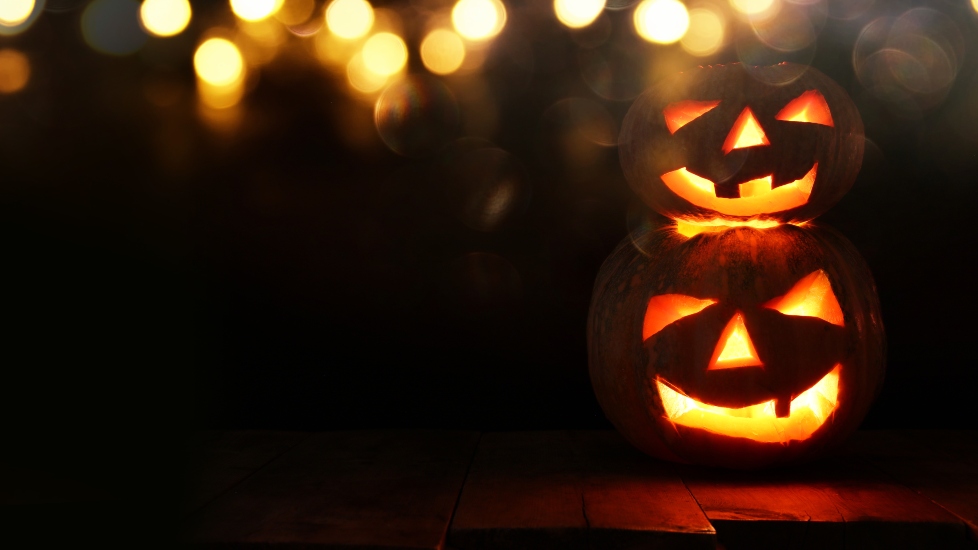
This day signified the time in which celebrants would welcome in the harvest while honoring the beginning of “the dark half of the year” and the night in which the veil between the physical world and the spirit world breaks down, allowing the opposing worlds to collide and fostering an opportunity for interaction between humans and dwellers of the Otherworld.
America, however, would not see the onset of Halloween traditions until the middle of the 19th century. Thus, while annual autumn festivities were familiar, it was the Irish fleeing the Potato Famine that would bring us the Halloween tradition of trick or treat and costumes we know today that would further fuel the popularity of Halloween celebrations nationally.
Then in 1907, a Pittsburgh paper reported the masquerading of girls as tomboys on Halloween. At this time, individuals experienced persecution through an arrest for cross-dressing, and homosexuality was a crime. However, by 1912, there was such a prevalence of cross-dressing in Pittsburgh that the police declared that they would no longer stop any cross-dressers during the holiday.
Simultaneously, the Great Migration brought thousands of former enslaved people to the North in hopes of a new life. As a result, Black people flooded cities like Chicago and New York. This great migration brought forth Black culture and traditions to create thriving artistic communities that ushered in jazz and the ever-popular Drag Balls.
In 1935, Alfred Finnie, an African American queer street hustler and gambler, founded what became known as Chicago’s best Drag Ball, which would eventually become the must-attend event of the season. The ball was even profiled by Ebony Magazine in 1952.
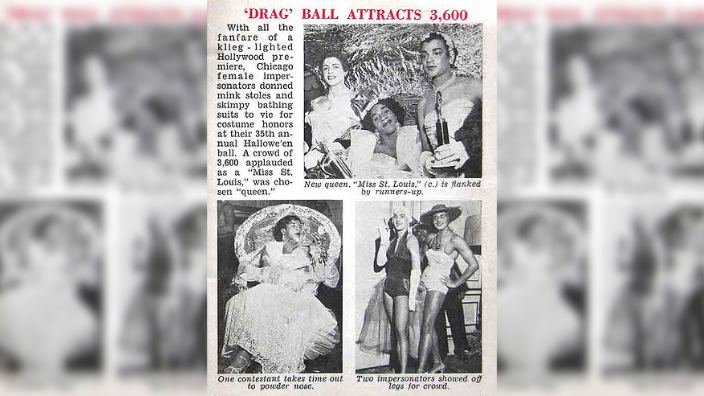
For both Black and white queer communities, Halloween became an outlet for people to safely play outside the restrictive and oppressive lines of the gender binary. These events also allowed people to embody, play and experiment with their gender-variant desires.
Yet, there should be no surprise as the LGBTQ community has long been a vital part of pagan tradition even in early Celtic cultures, often taking on the role of priests, shamans, witches, and healers who performed as a spirit medium during Halloween season and beyond.
Throughout the late 1940s through the 1970s, Halloween Drag Balls were in full swing, however, they were not popular everywhere — you would primarily find them in big cities like New York and Chicago. By contrast, most of the American population discouraged the switching of perceived gender roles during the festive holiday.
The United States was a robust nation that prided itself on building the wholesome nuclear family structure that adhered to strict gender norms and respectability politics. Thus began the commercialization of Halloween as a time when neighbors came together to celebrate their communities with festive gatherings for children who would go door to door dressed as in their favorite characters for candy — a far cry from the origins of warding off spirits and things that go bump in the night.
I believe we began to see the onset of hyper-sexualized costumes through the practice of extreme gender stereotypes of children’s costumes. These oversimplified notions further created social norms that are divisive and exclusionary. Costumes would often portray girls as princesses or homemakers that oozed femininity and subordination to the patriarchy. While boys’ costumes were depicted as solid villains, warriors, or criminals. There was added emphasis on robust masculinity that tends to lead to a more toxic depiction of masculinity.
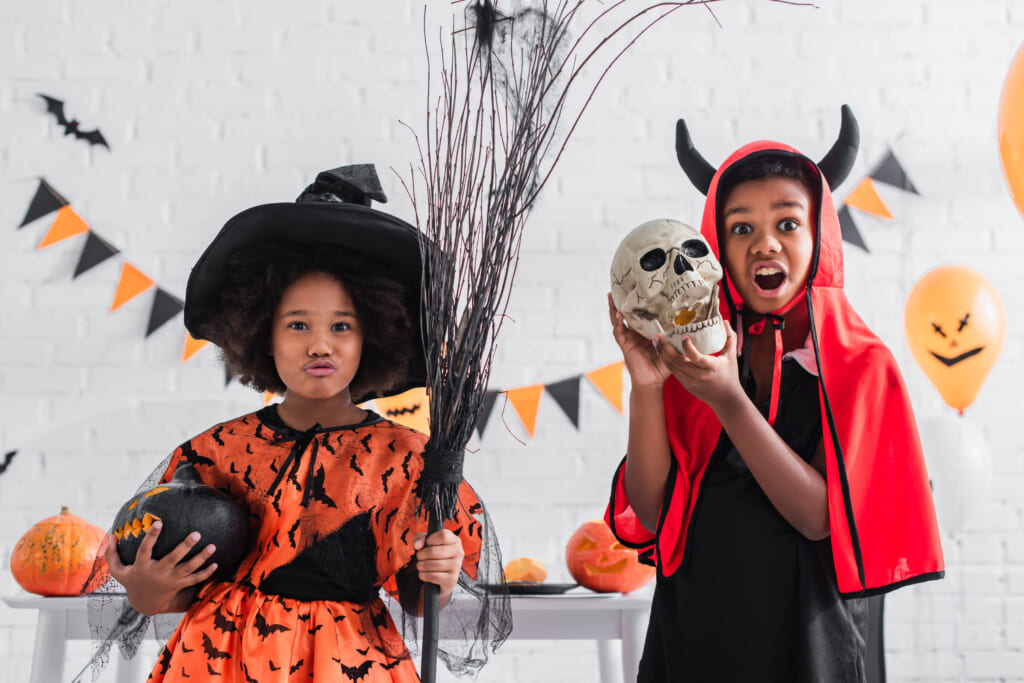
While these hyper-binary costumes were viewed as cute and wholesome, no one appeared to foresee their long-term effects. Throughout the sexual revolution, where Americans practiced ‘free love’ through premarital sex, we celebrated women in the workplace, and access to birth control was on the rise.
Yet, today, as a nation, we continue to maintain rigid gender norms and patriarchal ideology in our Halloween holiday celebrations. There is no better example of that than the 2004 cult classic, Mean Girls, in which the now-ubiquitous phrase, “Slut-O-ween” radically supercharged the idea of women dressing provocatively on this night without care or concern. The film went on to justify the patriarchal practice with the infamous line: “Halloween is the one night a year when a girl can dress like a total slut, and no other girls can say anything about it.”
Empowering or problematic, one could see it either way. I’ve always taken pride in my creativity and industrious DIY skills to put together elaborate costumes. Yet, I am not above personal critique, and as I began to write this piece, I took a walk down memory lane to examine my costume choices and realized that historically I have often utilized the holiday to unleash my inner hot thot.
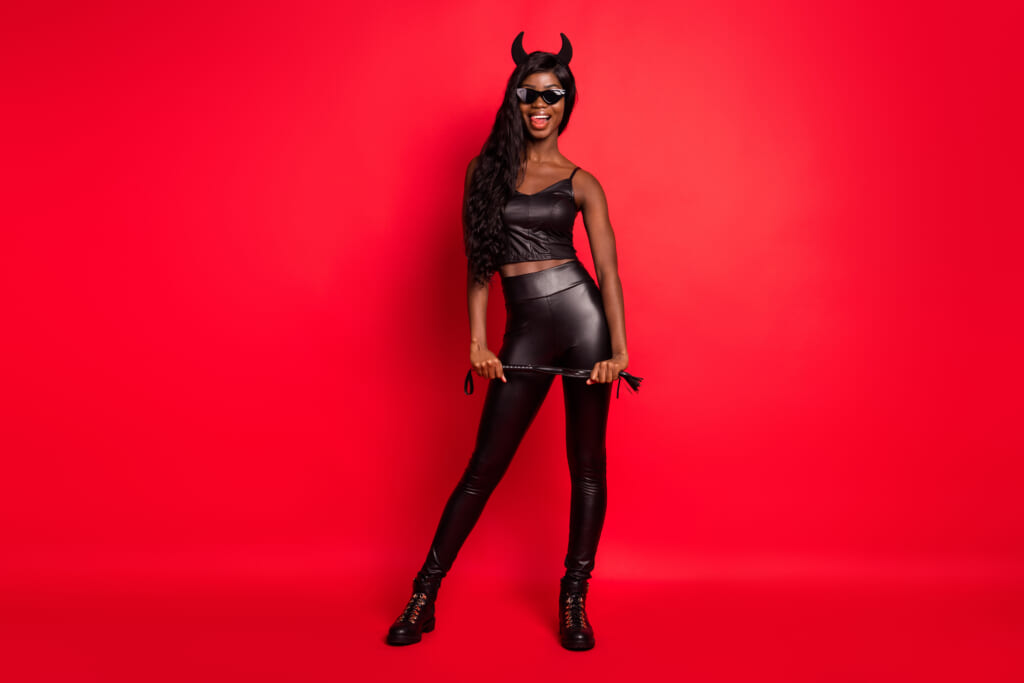
This required me to pause and explore the possibility that patriarchy had duped me into subconsciously exploiting myself for the pleasure of the male gaze while simultaneously believing I was consciously liberating myself sexually. I am not sure whether there is a right or wrong answer to this discussion; instead, I hope it provides some context for future dialogue on this topic.
I believe that I have found a fair and comfortable way to flaunt my sexuality while pegging patriarchy with purpose. A few years back, I decided to combine some of my favorite passions by applying my theatrical creativity and sexual health knowledge to create a different kind of sexy Halloween heroine.
One year I went as a vibrator demanding that we all celebrate the female orgasm. Another year, I went dressed as the pesky sexual parasites known as “crabs.” Both costumes went over very well and allowed me to talk with partygoers about getting tested and knowing the importance of communication in pursuit of ‘good’ sex.
At the end of the day, I encourage people to live their best lives every Halloween, regardless of why they want to role play or cross-dress in campy attire or seduce partygoers with costumes like the sexy nurse or a sexy pizza rat.
My only hope is that we do it more intentionally with purpose. Happy Halloween, queens!
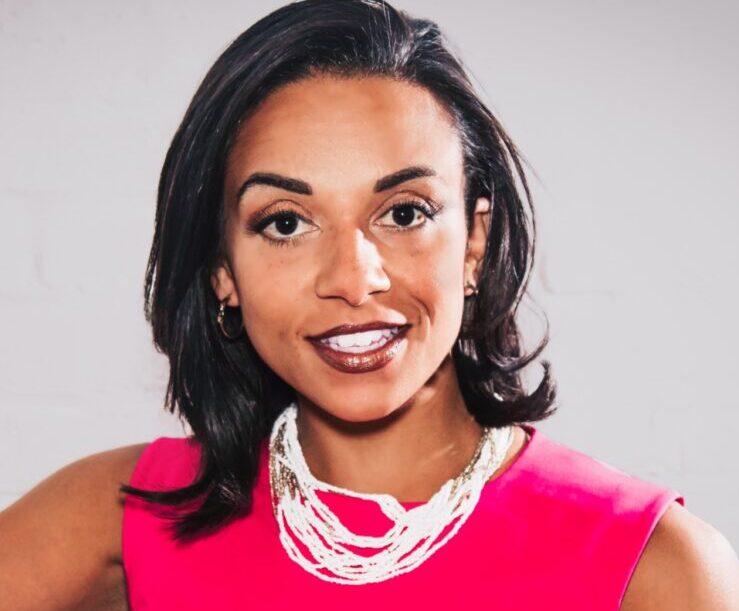
Michelle Hope is a dedicated sexologist, educator, and activist with a Master’s degree in Human Development and extensive post-graduate training in sexuality. She is a veteran speaker with over 15 years of experience delivering impactful informative lectures and training across the nation. She believes as though her work, in marginalized urban communities, has provided her with deep insight and comprehension of the holistic implications of sexuality on one’s life. Hope is also the founder of Mixed Moxie, a social impact firm focusing on the advancement of Reproductive Justice and sexual health equity for all people; regardless of gender expression, sexual orientation, ethnicity, religious beliefs, or socioeconomic status.
Have you subscribed to the Grio podcasts, ‘Dear Culture’ or Acting Up? Download our newest episodes now!
TheGrio is now on Apple TV, Amazon Fire, and Roku. Download theGrio today!
The post Are sexy Halloween costumes empowering or problematic? appeared first on TheGrio.
from TheGrio https://ift.tt/3mueQR1
No comments: